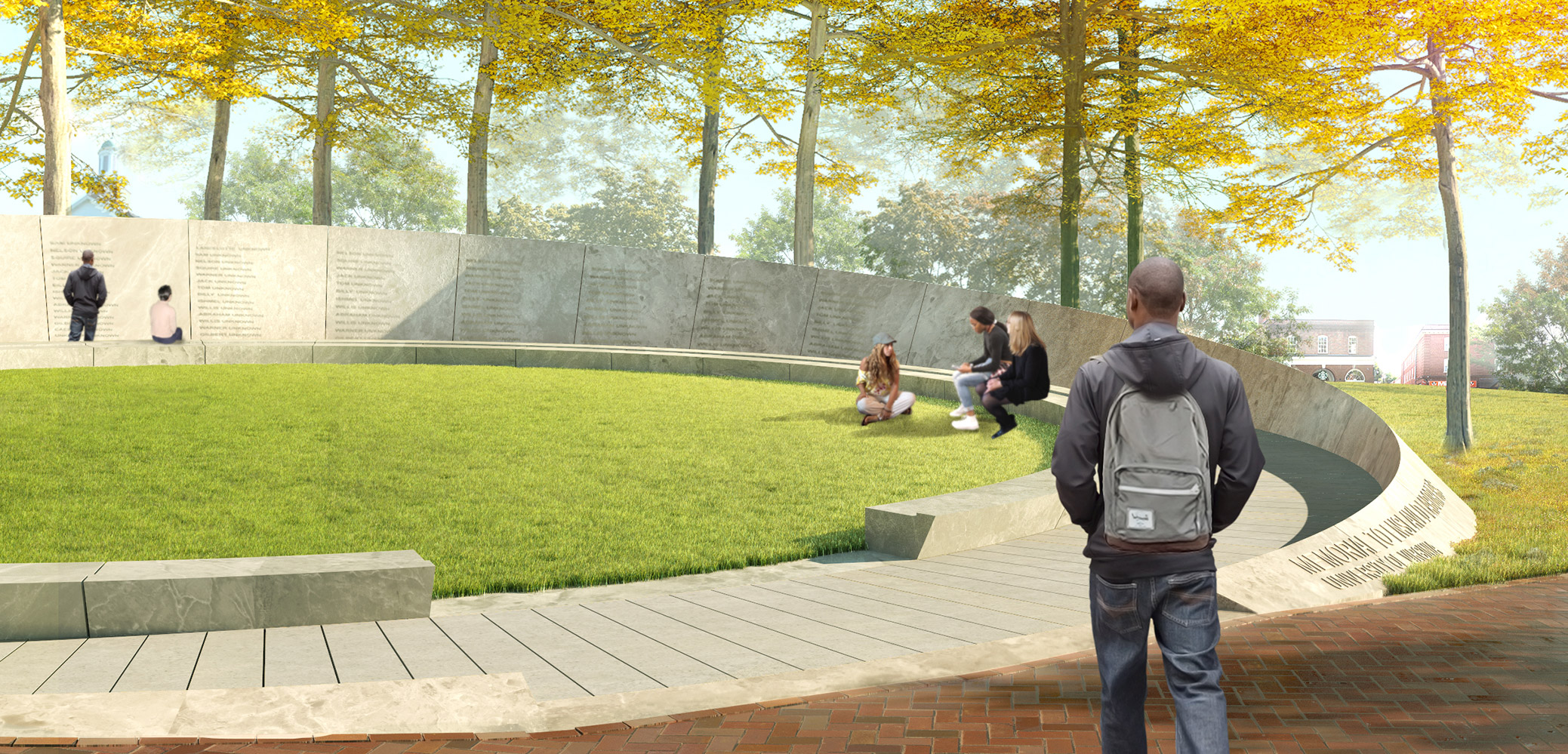A circular stone wall, open at one section, rises from an open green area of the University of Virginia’s Grounds east of Brooks Hall and across from the Corner.
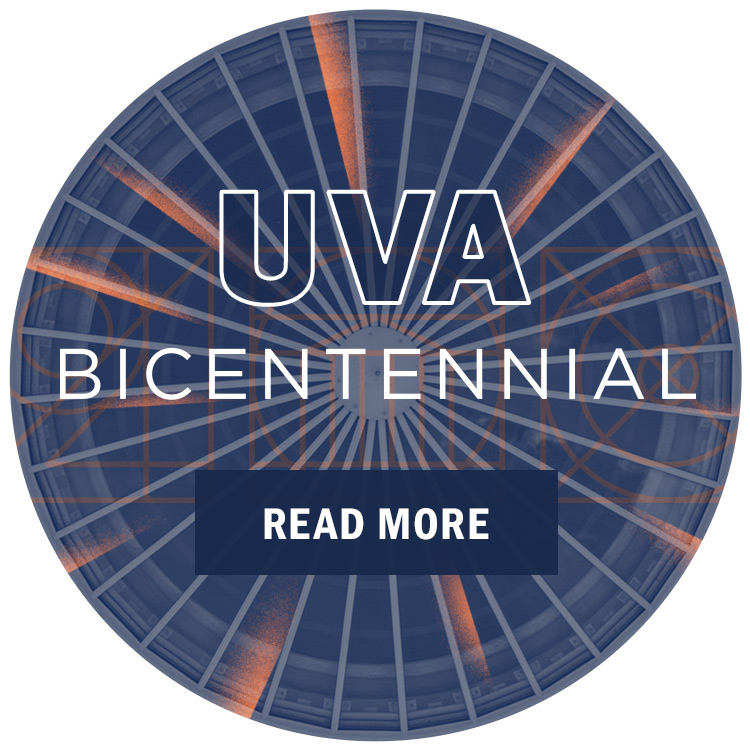
Within this circle, a stone bench provides opportunity for quiet reflection, especially when reading the names inscribed on the interior wall – names of enslaved laborers who worked to build and sustain the University.
This is the Memorial to Enslaved Laborers, featuring the “Freedom Ring” designed to commemorate the contributions of enslaved workers.
The Board of Visitors Buildings and Grounds Committee on Friday approved the schematic design and location, developed and presented by a design team that has worked on the project for months. The vote authorizes the team to move forward for “further development and construction,” according to the board resolution.
“Our decision to create a memorial to enslaved workers is an expression of our shared commitment to tell the full story of the University’s past, as we look toward its future,” UVA President Teresa A. Sullivan said.
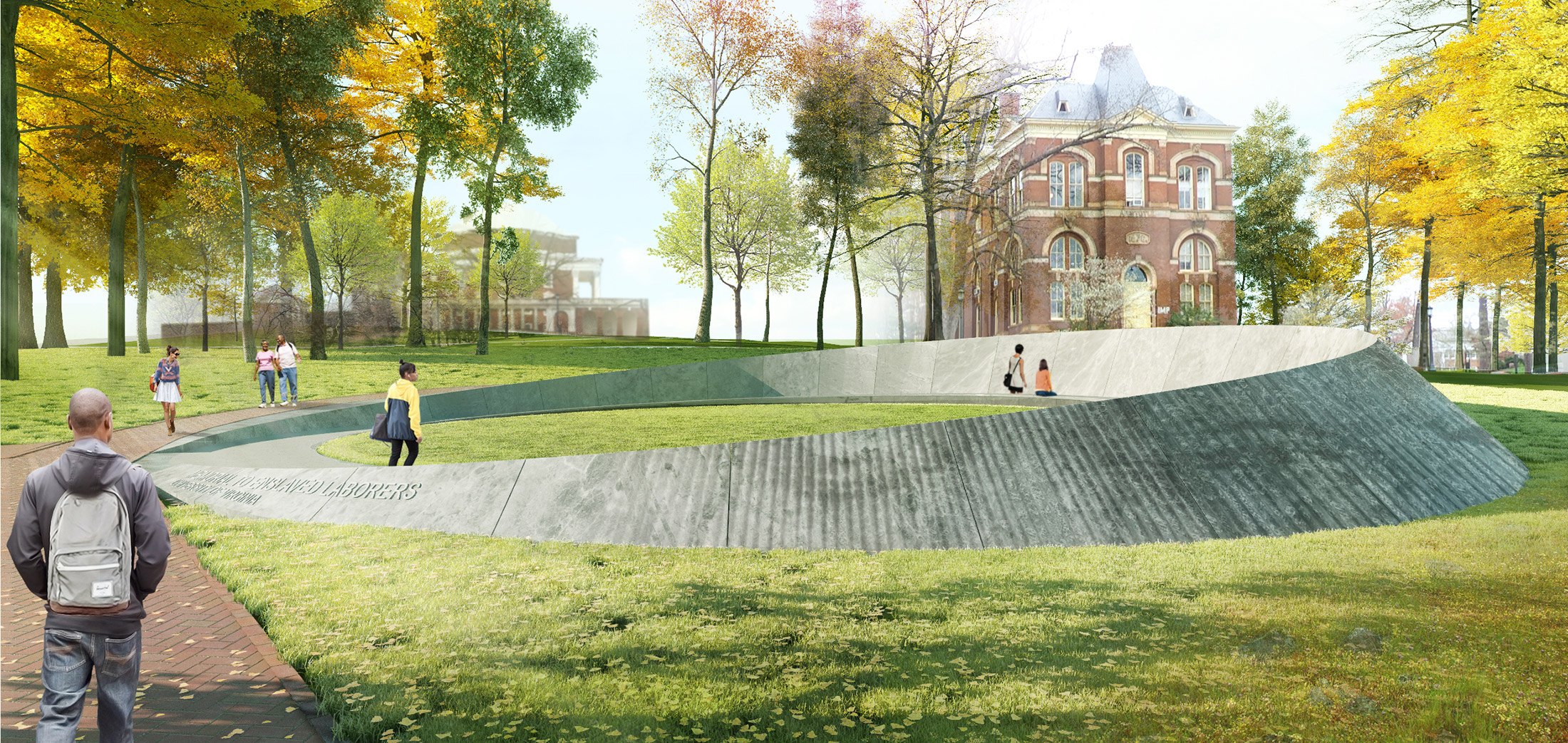
The memorial will be built on an open green area of the UVA Grounds east of Brooks Hall and across from the Corner, selected for its accessibility and visibility.
The design approved on Friday emerged after months of research and public outreach to the University community, alumni and Charlottesville-area residents by the President’s Commission on Slavery and the University. Sullivan established the commission in 2013, and its charge included considering an appropriate memorial, among other activities addressing the University’s historical relationship with slavery and enslaved people.
University researchers continue to delve into the issue, but already estimate that thousands of enslaved laborers worked to build and sustain UVA during its formative years. Through this ongoing work, the University has emerged as a leader in efforts to thoroughly explore the complexities of slavery and institutions of higher education – an issue that has rapidly gained national significance in recent years.
“This memorial design is a powerful statement that speaks to the University of Virginia’s full and honest history, and its sincerity in appropriately commemorating that history,” said commission co-chair Dr. Marcus Martin, UVA’s vice president and chief officer for diversity and equity. “We have arrived at this point thanks to the many contributions of those at the University who have long desired an appropriate memorial and those in the community who have engaged with us in this effort.”
The President’s Commission previously gave its unanimous support for the memorial design, Martin said.
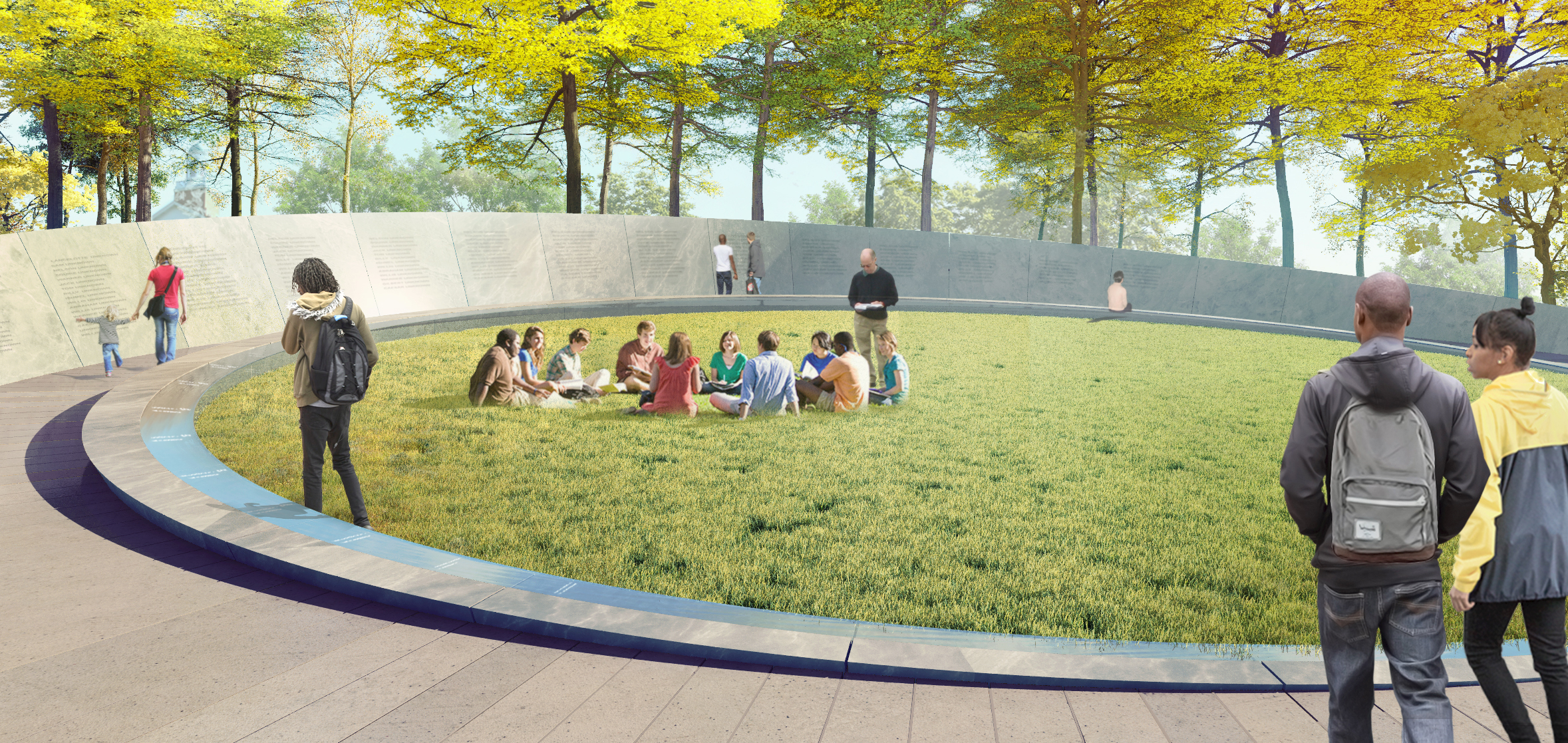
The inner circle’s grassy area is imagined as a gathering place, which was important to students who participated in the design process.
In fall 2016, the Board of Visitors selected the Boston firm Höweler+Yoon to design the memorial, and added three other individuals to the design team: Frank Dukes, co-founder of University & Community Action for Racial Equity and past director of the Institute for Environmental Negotiation in the UVA School of Architecture; alumna Mabel O. Wilson, an architectural historian at Columbia University who recently published, “Begin with the Past: Building the National Museum of African American History and Culture”; and Gregg Bleam, a landscape architect who has taught at UVA and worked in and around the University for about 30 years.
The proposed design was presented Friday by Alice J. Raucher, architect for the University, and memorial design team members Meejin Yoon and Wilson.
“From the beginning, they have collaborated on a project that has singled out UVA as a leader in addressing its history, not only through the wide-reaching President’s Commission on Slavery and the University, but through the level of community engagement and meaningful dialogue that has brought us to this moment of review with you,” Raucher told the committee members.
Starting in November, the design team cast a wide net to solicit input on what form the memorial should take and where it should be located. It conducted an online survey; held several information sessions open to students, faculty and staff members; set up information tables in Newcomb Hall; gave presentations to the slavery commission, UVA’s steering committee for the project and Architecture School faculty members and students; met with black alumni in Northern Virginia; and held three public meetings at local sites such as the Jefferson School African-American Heritage Center.

“It became clear from the feedback we received that people want the memorial to be a place of learning as well as a place of healing in acknowledging this difficult past, not only of the University’s, but also our nation’s history,” Wilson said.
“Based on all the input, we selected the location because of its accessibility and visibility to the community, located right along University Avenue,” Yoon said.
“The form of the memorial is inspired by the idea of broken shackles, and the design incorporates several levels of circles in its walls, bench, ring of water and walkways. The circle of the memorial will edge two busy pedestrian paths,” she said.
The exterior circular wall, to be made of Virginia Mist granite quarried in Culpeper – the same kind of stone used on the upper terrace of Rotunda – will be textured, possibly suggesting human features to lend a realistic impression to the symbolic design.
The interior face of the wall will be polished stone and bear the names of enslaved workers – nearly 1,000 names from the years 1817 to 1865. Researchers combing through early UVA documents have found these names – often only first names – of enslaved people who lived and worked on Grounds, either rented by the University or owned or rented by faculty members, hotelkeepers and administrators, said Slavery Commission co-chair and history professor Kirt von Daacke.
He and others estimate the total number of enslaved laborers at the University over that time period probably reaches at least 5,000 people.
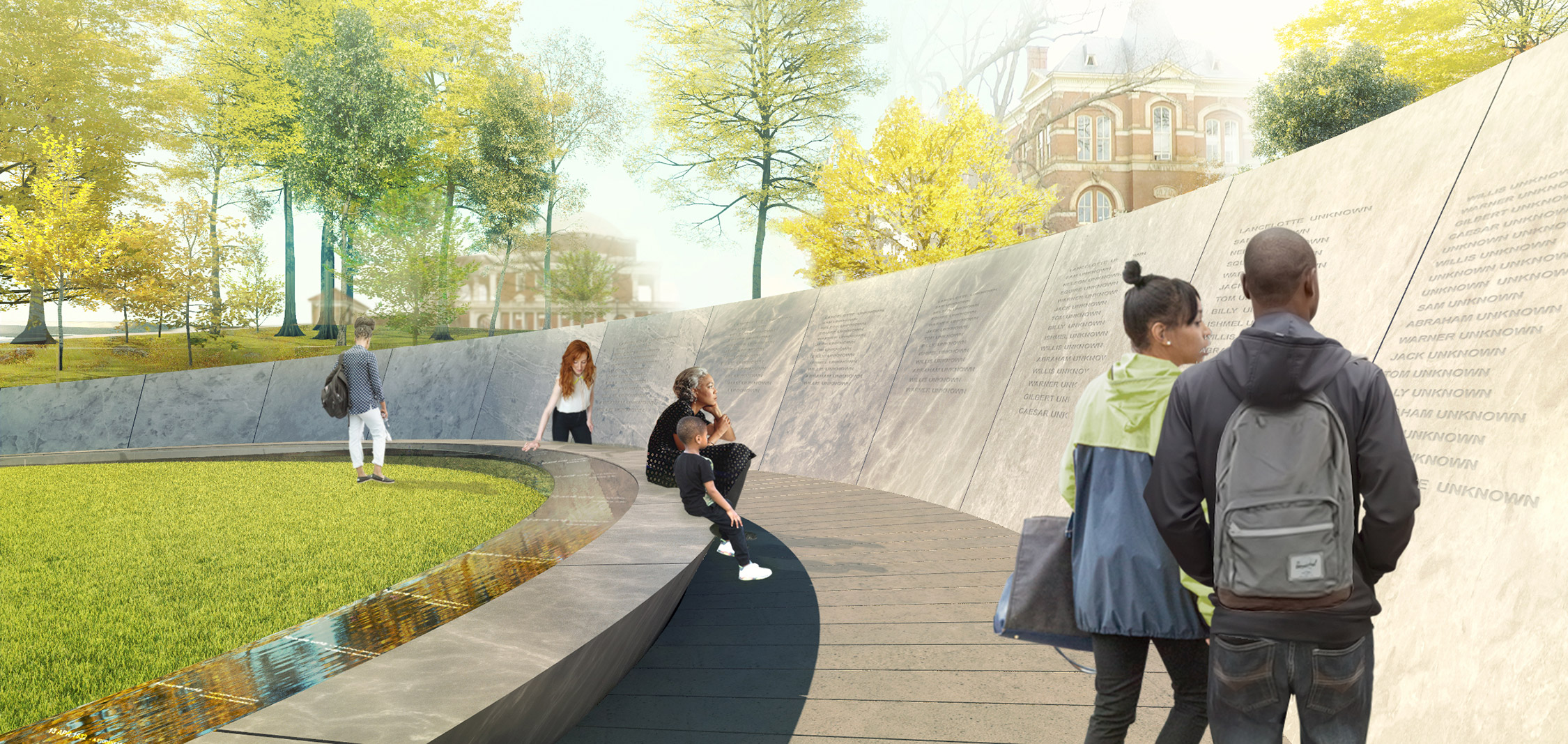
The interior face of the wall will bear the names – often only first names – of nearly 1,000 enslaved people who lived and worked on Grounds between 1817 and 1865.
Next to the interior circular bench, a ring of water spilling over a stone shelf will be inscribed with a timeline related to the history of slavery at the University and the country.
The Freedom Ring memorial will be situated in a clearing in a newly planted grove of trees, recalling the African-American tradition of holding meetings in a clearing in the woods, said University landscape architect Mary Hughes, a member of the project steering committee.
The inner circle’s grassy area is imagined as a gathering place, which was important to students who participated in the design process, von Daacke said. Activities such as performances or classes could be held there.
Design refinements to the memorial will continue, and the University will begin efforts to build philanthropic support for the project.
Media Contact
Article Information
June 9, 2017
/content/design-uva-memorial-enslaved-laborers-wins-approval

